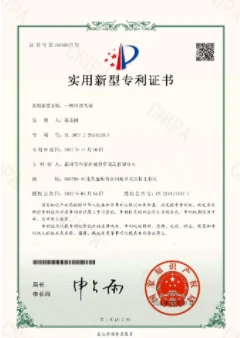Advanced Machinery for Plastic Tube Production and Manufacturing Processes
The Evolution and Impact of Plastic Tube Manufacturing Machines
In today's manufacturing landscape, the demand for precision and efficiency is paramount, particularly in industries that rely heavily on plastic tubing. From medical applications to consumer goods, the production of plastic tubes requires advanced machinery that can deliver high-quality products consistently. The plastic tube manufacturing machine stands at the forefront of this need, embodying the technological advancements and innovations that have transformed how these essential components are produced.
Understanding Plastic Tube Manufacturing Machines
Plastic tube manufacturing machines are specialized equipment designed to create tubes from various plastic materials. The process typically involves extruding molten plastic through a die to form a continuous tube, which is subsequently cooled, cut, and finished to meet specific requirements. These machines can accommodate a wide range of plastics, including polyethylene, polyvinyl chloride (PVC), and polypropylene, providing versatility for different applications.
Key Components of a Plastic Tube Manufacturing Machine
1. Extruder The heart of the manufacturing process, the extruder melts and mixes the plastic resin before it is shaped into a tube. It consists of a hopper, a screw mechanism, and a heater. The screw pushes the resin through the heating chamber, where it is melted and homogenized.
2. Die This component shapes the molten plastic into the desired tube form. The die's design is critical, as it determines the tube's diameter and wall thickness. Precision die design is essential for achieving uniformity and consistency in production.
3. Cooling System After the tube is extruded, it must be cooled to retain its shape. This is typically accomplished through a water bath or an air cooling system. Effective cooling is crucial to prevent warping and ensure the structural integrity of the final product.
4. Cutting Unit Once cooled, the continuous tube is cut into predefined lengths. This process requires high accuracy to meet industry specifications and customer requirements.
5. Control Panel Modern machines are equipped with advanced control systems that allow operators to monitor and adjust various parameters throughout the production process. These systems enhance efficiency and minimize errors.
plastic tube manufacturing machine

The Importance of Automation in Tube Manufacturing
Automation has revolutionized plastic tube manufacturing, allowing for greater precision, efficiency, and reduced labor costs. Automated systems can handle the entire production process—from feeding the plastic material into the extruder to cutting and packaging the finished tubes. This not only leads to reduced production times but also minimizes human error, resulting in higher quality products.
With the integration of Industry 4.0 technologies, manufacturers can leverage data analytics and IoT (Internet of Things) solutions to optimize their operations further. Real-time monitoring of production metrics enables manufacturers to anticipate maintenance needs, reducing downtime and improving overall efficiency.
Applications of Plastic Tubes
The applications of plastic tubes span a multitude of industries. In the medical field, for instance, plastic tubes are used for everything from syringes to intravenous lines, where ensuring sterility and precision is critical. In the automotive industry, plastic tubes are found in fuel systems and cooling lines, requiring materials that can withstand high temperatures and pressures.
Furthermore, the consumer goods sector relies on plastic tubes for packaging products such as cosmetics, adhesives, and food items. The versatility and design flexibility offered by plastic tubing make it an ideal choice for both functional and aesthetic purposes.
Environmental Considerations
As the plastic industry faces increasing scrutiny regarding environmental impact, manufacturers are investing in more sustainable practices. This includes employing biodegradable materials for production and implementing recycling systems that reclaim plastic waste. Innovations such as bio-based plastics are gaining traction, and manufacturers are being encouraged to adopt practices that minimize their carbon footprint while still meeting the demands of the market.
Conclusion
Plastic tube manufacturing machines play an indispensable role in producing one of the most widely used components in various industries. With their evolving technology, enhanced automation, and a growing focus on environmental responsibility, these machines are poised to meet the challenges of modern manufacturing. As demand for precision and efficiency continues to grow, the future of plastic tube manufacturing looks bright, driven by innovation and a commitment to sustainability. Manufacturers that embrace these changes will not only thrive but also contribute to a more sustainable future for the industry.
-
High Frequency Straight Seam Welded Pipe Production Line-BzZhou Xinghua Machinery Equipment Manufacturing Co., LTD.|line pipe steel&welded gas pipeNewsJul.30,2025
-
High Frequency Straight Seam Welded Pipe Production Line-BzZhou Xinghua Machinery Equipment Manufacturing Co., LTD.|High Precision&Automated SolutionsNewsJul.30,2025
-
High Frequency Straight Seam Welded Pipe Production Line - BzZhou Xinghua Machinery Equipment Manufacturing Co., Ltd.NewsJul.30,2025
-
High Frequency Straight Seam Welded Pipe Production Line-BzZhou Xinghua Machinery Equipment Manufacturing Co., LTD.|Precision Welding, High EfficiencyNewsJul.30,2025
-
High Frequency Straight Seam Welded Pipe Production Line|BzZhou Xinghua|Precision Welding&EfficiencyNewsJul.30,2025
-
High Frequency Straight Seam Welded Pipe Production Line - BzZhou Xinghua|Precision Engineering&EfficiencyNewsJul.30,2025


